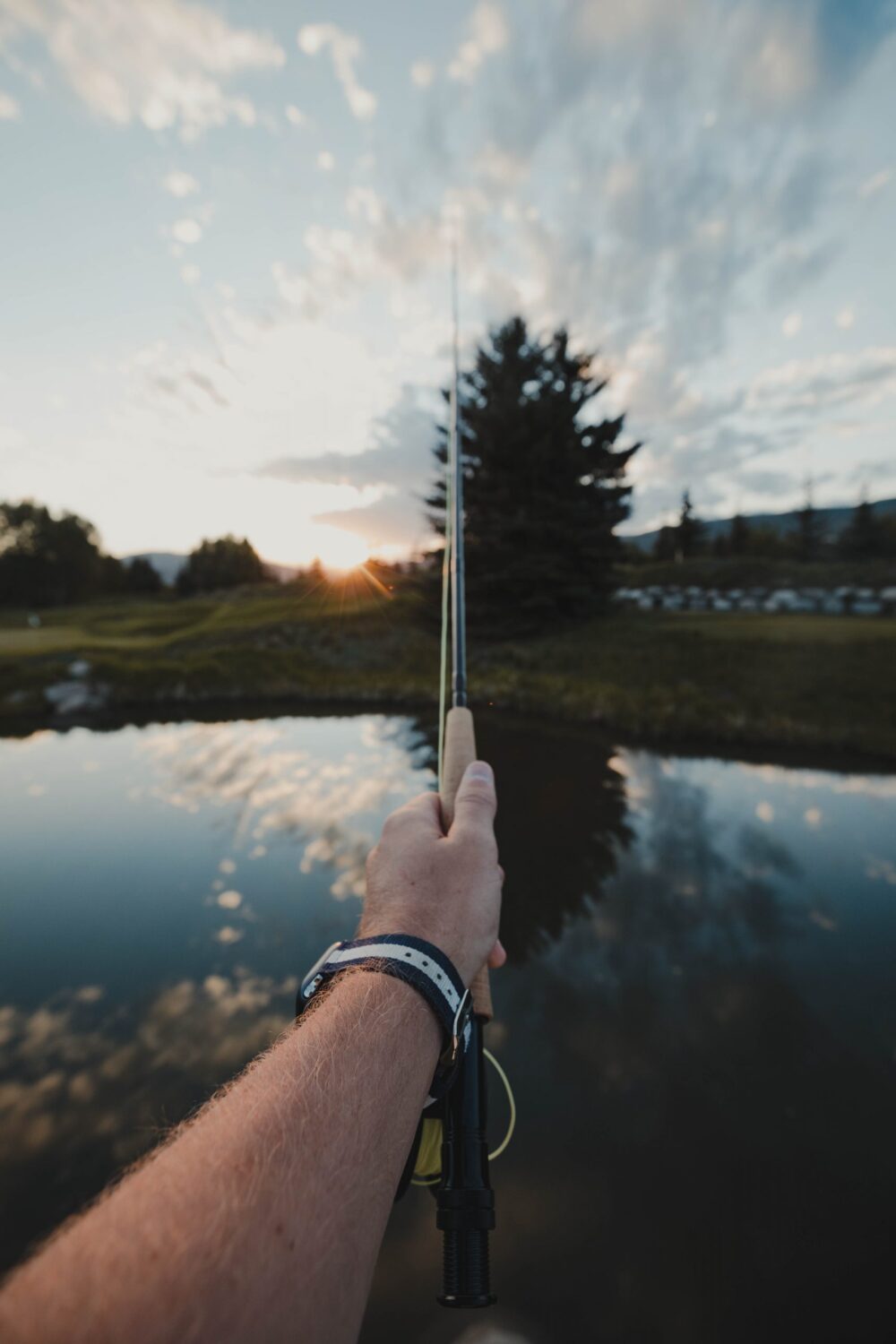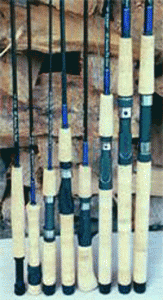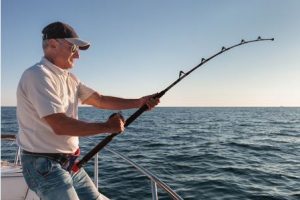Buying a brand new fishing rod can be pretty expensive, leaving many fishers considering the purchase of a used rod. However, there are a few things to think about before purchasing used fishing rods.
Here are some of the things to keep in mind when you’re purchasing a used fishing rod.
Check the Overall Quality of Your Fishing Rod
One of the most important parts of buying a fishing rod is to check the rod’s overall quality before you consider buying it. The rod condition is indicative of how long it will last you going forward and if it’s what you’re looking for in a rod.
Check the Joints of Your Fishing Rod
When you’re looking for a used fishing rod, specifically check the joints and make sure everything fits together perfectly. If the joints are worn out, the rod will wobble during casting and have the potential of cracking when reeling in your catch.
Be sure to check the rod rings, which, if it’s in bad condition, can damage the fishing line and negatively impact the fisher’s distance from casting. In addition to the state of the fishing rod, you should also consider how much repairs would cost if necessary now or if you think something might become an issue in the immediate future.
Does Your Fishing Rod Need Repairs?
Spending a few hundred dollars on a used fishing rod seems like a cost-effective purchase. However, if you need to put another few hundred dollars worth of repair into, you would have been better off just purchasing a brand new fishing rod from the beginning.
For veteran fishers who know exactly what type of fishing rod they want to help them catch specific types of fish, buying a used rod can be a detriment to their skill level. Taking a used and potentially damaged fishing rod out for a day can be frustrating and unproductive.
What Should You Know Before Purchasing Your Used Fishing Rod?
Before purchasing your used fishing rod, you should first make sure that you know the length and duration. A ten-year-old fishing rod is a riskier purchase than a rod purchased six months ago and only used twice. Also, ask what water the rod was used in and to catch what types and weights of fish. Asking these questions will help you determine the wear of the rod.
Lastly, don’t forget to inquire about the action it has and why the seller is getting rid of the rod.
Should You Purchase a Used Fishing Rod?
Through the inspection and questioning process, you will be able to tell whether purchasing a used rod is the right decision. You should also weigh the benefits and features of the used rod against the benefits and features of a new, customized rod that you could purchase designed exactly how you want. Remember always to look, inspect, and ask before you leap into buying a used fishing rod.
Signature Fishing Rods
If you find yourself getting exhausted looking for the right used fishing rod, and you decide you want to invest in a new fishing rod, contact Signature Fishing Rods. We have new affordable and reliable fishing rods, fishing reels, and lures that will contribute to a successful outing. Do you have any questions? Give us a call at 630-234-6214.



 I am like anyone else and use a variety of baits, lures and techniques. If a fish hits a lure, I generally react appropriately. At first, using live bait did not go as well as hoped. Relying on Lindy Rigs or bottom bouncers in swallow or deep water, in holes or up against rocks, I did fine as long as fish hit hard. The problem was the soft or light hits. I could not feel them and only realized I missed something when I reeled in to check my bait.
I am like anyone else and use a variety of baits, lures and techniques. If a fish hits a lure, I generally react appropriately. At first, using live bait did not go as well as hoped. Relying on Lindy Rigs or bottom bouncers in swallow or deep water, in holes or up against rocks, I did fine as long as fish hit hard. The problem was the soft or light hits. I could not feel them and only realized I missed something when I reeled in to check my bait. Whether you’re an occasional fisherman with one fishing rod or an experienced fisherman with 20 of them, you should make sure you maintain each and every rod you use. It will extend the life of it and ensure that it delivers optimum performance when you’re out on the water. Here are some maintenance steps to take to keep your fishing rod in like new condition.
Whether you’re an occasional fisherman with one fishing rod or an experienced fisherman with 20 of them, you should make sure you maintain each and every rod you use. It will extend the life of it and ensure that it delivers optimum performance when you’re out on the water. Here are some maintenance steps to take to keep your fishing rod in like new condition. Fishing has become one of the most popular outdoor activities in the U.S. over the course of time. As of right now, there
Fishing has become one of the most popular outdoor activities in the U.S. over the course of time. As of right now, there  Being left-handed can be tough. About 90 percent of Americans are right-handed, and as a result, most products are manufactured with right-handed people in mind. Scissors, computer mice, and other things that people use on a daily basis are better suited for those who use their right hands than those who use their left hands. And even when things are made for lefties, they can be hard to find in certain instances.
Being left-handed can be tough. About 90 percent of Americans are right-handed, and as a result, most products are manufactured with right-handed people in mind. Scissors, computer mice, and other things that people use on a daily basis are better suited for those who use their right hands than those who use their left hands. And even when things are made for lefties, they can be hard to find in certain instances. Purchasing a new fishing pole is an important investment. Those who love to fish will often spend a decent amount of money replacing their existing pole with one that will work best for them. Before you decide to pull the trigger on a new fishing pole, you should take the time to consider a few factors. Check out some things you
Purchasing a new fishing pole is an important investment. Those who love to fish will often spend a decent amount of money replacing their existing pole with one that will work best for them. Before you decide to pull the trigger on a new fishing pole, you should take the time to consider a few factors. Check out some things you  Does it feel like you’ve fallen into a rut when it comes to fishing? It can, unfortunately, be very easy to get stuck in place and feel like you’re not making improvements as an angler. However, there are some simple steps you can take to change that. Let’s take a look at a few tips for becoming a better fisherman.
Does it feel like you’ve fallen into a rut when it comes to fishing? It can, unfortunately, be very easy to get stuck in place and feel like you’re not making improvements as an angler. However, there are some simple steps you can take to change that. Let’s take a look at a few tips for becoming a better fisherman.



